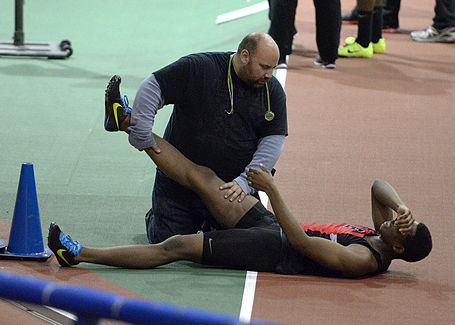Working out can be more than a recreational activity for people. Sometimes people work out to build a better body, to be healthier, to lose weight, or even as part of treatment and recovery. These various reasons may have led to the occurrence of various other exercise routines, techniques, and methods that a lot of enthusiasts may have tried and experimented with to gain the results they need.
Given that exercise is a physical activity, the occurrence of a personal injury is always a risk to consider when conducting these kinds of physical activity.
As such, it’s important to remember that exercise should be done with a particular level of care and guidance from a professional should one be available. Should you experience a personal injury that was caused by someone else or by equipment of the gym you’re in, you can click here to communicate with a legal professional who can help you in the situation. The key tips below to reduce personal injury when you’re working out may be optimal for your fitness level, but do remember to consult a trainer or a professional to check if these methods are compatible with you.
Study, Research, and Prepare
When you work out, you more or less have a routine depending on the kind of muscle group you’re working with. If you’ve been working out for a while, you have a general idea of how to build your “ideal” routine. If you’re starting out, however, this can get tricky. Avoiding personal injury when you’re working out has a lot to do with the routine you choose for yourself.
When building or evaluating a routine, try to make sure it is appropriate for your needs. Some people rely on one to two rounds of exercise in a particular day depending on their free time. Some do two sets of exercises with shorter times, or one long round of exercising. Some exercise once, twice, or three times a week depending on their availability.
Once you know your schedule, you can build a routine around it. If you have a lot of time to allot for exercising, you can split your routines, especially if say you’re working at home. If you have limited time and can only work out a few days at a time, perhaps you can isolate muscle groups on particular days.
Take Breaks and Rest

The popular saying, “abs are built in the kitchen,” is true… this principle applies to fitness in general. When you work out, the particular muscle group you are stressing is breaking down fat and at the same time “shaping” your muscles. However, it’s during rest that your body is actually able to properly let your muscles grow. This means while overexertion can help, it’s not something that is recommended all the time.
In fact, according to Kansas State University, there were 3.3 million visits to the emergency room because of injuries caused by overexertion in 2008 alone. This puts overexertion in the top three when it comes to causes of unintentional injuries to individuals in the whole of United States. To avoid overexertion, follow these tips:
- Make sure you get adequate sleep when you work out. This is sometimes one of the neglected aspects of working out, as many people aren’t aware that getting enough sleep is necessary to make sure your muscles get the right kind of rest they need. Properly rested muscles are muscles that can be prepared for another day of exercising.
- Rest is also needed in between sets and repetitions. This is especially the case if the kind of exercises you’re doing require a lot of effort because of heavy weights or heavy volume. Overexertion can leave you open to injuries, which means it’s helpful that you get adequate rest during the routine itself to make sure your muscles are prepared for every encounter with your exercise methods.
- Eating properly is an important aspect of resting and taking breaks. It’s not bad to have cheat periods, but make sure the food you’re eating will not be detrimental to your progress or to your health. Consult a dietician or a health professional to find the right kind of diet that suits your needs, especially if you have a particular fitness goal.
Have a Consultation and Get Professional Advice
Perhaps one of the most important  aspects of making sure you avoid injuries while working out is to make sure you work out “properly.” Regardless of how easy some exercise routines and methods work, there’s more or less a “proper” way to execute them for maximum effect. This is why sometimes fitness enthusiasts you encounter online may have different variations of the same exercise. However, before you execute them, consult a professional such as a trainer to see if such a variation is good.
aspects of making sure you avoid injuries while working out is to make sure you work out “properly.” Regardless of how easy some exercise routines and methods work, there’s more or less a “proper” way to execute them for maximum effect. This is why sometimes fitness enthusiasts you encounter online may have different variations of the same exercise. However, before you execute them, consult a professional such as a trainer to see if such a variation is good.
Try to have a trainer more or less observe you while doing your routine and have them correct the things you’re doing wrong. This can involve making sure you have proper form, or that you’re doing the most adequate combination of exercises for your body type and goals.
If you think your routine has to be intensely modified, try to consult a trainer or a medical professional as to the kind of approach you should have depending on your particular needs and goals.
The Right Routine, the Best Results
The key tips above to reduce personal injury may or may not be compatible with your particular situation. This is because fitness routines and exercise methods differ from one person to the next, especially with respect to the kinds of goals and aspirations a fitness enthusiast may have. It’s important to remember to consult professionals such as physicians and trainers in order to ensure that the tips above that you wish to follow are appropriate for the kind of routine you want to conduct and the kind of results you want to achieve.

Leave a Reply